Current Market Top Business Scopes Trend—A Concurrent Text and Time Series Active Learning Study of NASDAQ and NYSE Stocks from 2012 to 2017
Abstract
:1. Introduction
- (1)
- What kind of business scopes are popular in the current U.S. market?
- (2)
- What key factors or specific productions show a promising development trend?
- (3)
- What business scopes are in alignment with U.S. market trends?
- (1)
- Use of text similarity to adjust the clustering results of numerical data, improving the clustering accuracy. Text similarity is used to evaluate the effectiveness of the clustering algorithm in most existing methods. In this paper, text similarity is directly used as a clustering index to carry out clustering work.
- (2)
- Active learning is introduced in the factor weight assignment stage. This method implies lower manpower costs, with lower time complexity.
- (3)
- Under this framework, more similarity measures can be introduced so that the clustering results more closely represent the actual situation, providing a better guiding effect with respect to the U.S. stock market.
2. Literature Review
2.1. Company Business Scope Identification using BI
2.2. Analysis Methodology in Current U.S. Market Research
2.3. Related Works on the NASDAQ or NYSE
3. Method
3.1. Data Selection and Data Preprocessing
3.2. Distance Calculation Functions
- (1)
- Either X or Y mention the other one as a competitor in their 10-K reports.
- (2)
- X and Y are in the same industry according to their 10-K reports.
- (3)
- X and Y are connected by lawsuit, contract, or acquisition according to their 10-K reports.
3.3. Active Learning and Clustering
| Algorithm 1 Framework of active learning for weights of numeric similarity and text similarity. |
|
3.4. Data Coding
4. Results
4.1. The Number of Stocks in NASDAQ Is Decreasing while the Number of Stocks in NYSE is Consistently Increasing
4.2. Most Popular Business Scopes are IT, Energy and Finance
4.3. State of Operation for Companies Researched
4.4. Specific Business Scopes of Big Data are the Most Popular
4.5. Growth of New Concepts in IT
4.6. Time of Companies Involved in New IT Business Scopes Are Diverse
5. Discussion
5.1. What Kind of Businesss Scopes Are Popular in the Present U.S. Market?
5.2. What Key Factors or Specific Productions Show Promising Development Trends?
5.3. What Business Scopes are in Alignment with U.S. Market Trends?
- (1)
- Big data, including “Big Data”, “Cloud Service”, “Cloud Computing”, “Social Data” and “Data Security”;
- (2)
- Finance, including “Online Service” and “E-commerce”;
- (3)
- Artificial intelligence, including “Artificial Intelligence”, “Business Intelligence”, “Machine Learning”, and “Virtual Reality”;
- (4)
- Blockchains or bitcoins;
- (5)
- New energy, including “New Energy Car” and “New Energy Exploit”.
6. Conclusions and Further Study
- (1)
- Other scenarios that use both text similarity and time series similarity. For example, if a house price time series and the corresponding real estate-related news of certain areas is obtained, then the DTTW algorithm mentioned in this article can be used to cluster the regions and find out the characteristics of regions that may have similar house price trends (gold price clustering, crude oil futures price clustering, etc.) in a similar way;
- (2)
- Since the texts used in this article are news texts, if short texts such as twitter texts are required for use, on adjusting the short texts similarity calculation algorithm, the DTTW can be used for clustering.
Author Contributions
Acknowledgments
Conflicts of Interest
References
- Bhojraj, S.; Lee, C.; Oler, D.K. What’s my line? A comparison of industry classification schemes for capital market research. J. Account. Res. 2003, 41, 745–774. [Google Scholar] [CrossRef]
- Pierce, J.R.; Schott, P.K. A concordance between ten-digit US Harmonized System Codes and SIC/NAICS product classes and industries. J. Econ. Soc. Meas. 2012, 37, 61–96. [Google Scholar]
- Chan, L.K.; Lakonishok, J.; Swaminathan, B. Industry classifications and return comovement. Financ. Anal. J. 2007, 63, 56–70. [Google Scholar] [CrossRef]
- Connor, G.; Sehgal, S. Tests of the Fama and French Model in India; Financial Markets Group, London School of Economics and Political Science: London, UK, 2001. [Google Scholar]
- Arrizabalaga, A. Google Finance Historical Stock Data Downloader; Springer: New York, NY, USA, 2003; p. 452. [Google Scholar]
- Liao, S.H.; Ho, H.H.; Lin, H.W. Mining stock category association and cluster on Taiwan stock market. Expert Syst. Appl. 2008, 35, 19–29. [Google Scholar] [CrossRef]
- Kalczynski, P.J.; Chou, A. Temporal Document Retrieval Model for Business News Archives; Pergamon Press, Inc.: Oxford, UK, 2005; pp. 635–650. [Google Scholar]
- Fu, T.C.; Chung, F.L.; Ng, V.; Luk, R. Pattern Discovery from Stock Time Series Using Self-Organizing Maps. In Workshop Notes of KDD2001 Workshop on Temporal Data Mining; Springer: New York, NY, USA, 2001; pp. 26–29. [Google Scholar]
- Guo, C.; Jia, H.; Zhang, N. Time series clustering based on ICA for stock data analysis. In Proceedings of the IEEE 4th International Conference on Wireless Communications, Networking and Mobile Computing (WiCOM’08), Dalian, China, 12–14 October 2008; pp. 1–4. [Google Scholar]
- Cai, Q.; Zhang, D.; Zheng, W.; Leung, S.C. A new fuzzy time series forecasting model combined with ant colony optimization and auto-regression. Knowl.-Based Syst. 2015, 74, 61–68. [Google Scholar] [CrossRef]
- Agrawal, R.; Faloutsos, C.; Swami, A. Efficient similarity search in sequence databases. In Proceedings of the International Conference on Foundations of Data Organization and Algorithms, Chicago, IL, USA, 13–15 October 1993; Springer: New York, NY, USA, 1993; pp. 69–84. [Google Scholar]
- Wattenberg, M. Visualizing the stock market. In CHI’99 Extended Abstracts on Human Factors in Computing Systems; ACM: New York, NY, USA, 1999; pp. 188–189. [Google Scholar]
- Achananuparp, P.; Hu, X.; Shen, X. The evaluation of sentence similarity measures. In Proceedings of the International Conference on Data Warehousing and Knowledge Discovery, Turin, Italy, 2–5 September 2008; Springer: New York, NY, USA, 2008; pp. 305–316. [Google Scholar]
- Wang, P.; Domeniconi, C. Building semantic kernels for text classification using wikipedia. In Proceedings of the 14th ACM SIGKDD International Conference On Knowledge Discovery and Data Mining, Las Vegas, NV, USA, 24–27 August 2008; ACM: New York, NY, USA, 2008; pp. 713–721. [Google Scholar]
- Bushman, R.M.; Chen, J.V.; Williams, C.D. Informativeness and Timeliness of 10-K Text Similarity for Predicting Tail-Risk Comovement; Elsevier: New York, NY, USA, 2017; pp. 298–315. [Google Scholar]
- Box, G.E.P.; Jenkins, G. Time Series Analysis, Forecasting and Control; Holden-Day, Incorporated: San Francisco, CA, USA, 1990. [Google Scholar]
- Rakthanmanon, T.; Campana, B.; Mueen, A.; Batista, G.; Westover, B.; Zhu, Q.; Zakaria, J.; Keogh, E. Searching and mining trillions of time series subsequences under dynamic time warping. In Proceedings of the ACM SIGKDD International Conference on Knowledge Discovery and Data Mining, Beijing, China, 12–16 August 2012; pp. 262–270. [Google Scholar]
- Brillinger, D.R. Time Series: Data Analysis and Theory; Society for Industrial and Applied Mathematics (SIAM): Philadelphia, PA, USA, 2001; Volume 36. [Google Scholar]
- Liao, T.W. Clustering of time series data—A survey. Pattern Recognit. 2005, 38, 1857–1874. [Google Scholar] [CrossRef]
- Himberg, J.; Hyvärinen, A.; Esposito, F. Validating the independent components of neuroimaging time series via clustering and visualization. Neuroimage 2004, 22, 1214–1222. [Google Scholar] [CrossRef] [PubMed]
- Bessler, W.; Kaen, F.R.; Kurmann, P.; Zimmermann, J. The listing and delisting of German firms on NYSE and NASDAQ: Were there any benefits? J. Int. Financ. Mark. Inst. Money 2012, 22, 1024–1053. [Google Scholar] [CrossRef]
- Spyrou, S. Sentiment changes, stock returns and volatility: Evidence from NYSE, AMEX and NASDAQ stocks. Appl. Financ. Econ. 2012, 22, 1631–1646. [Google Scholar] [CrossRef]
- Carrion, A. Very fast money: High-frequency trading on the NASDAQ. J. Financ. Mark. 2013, 16, 680–711. [Google Scholar] [CrossRef]
- Klock, S. The January Effect: A Test of Market Efficiency; Longwood University: Farmville, VA, USA, 2014. [Google Scholar]
- Hu, Y.; Feng, B.; Zhang, X.; Ngai, E.; Liu, M. Stock trading rule discovery with an evolutionary trend following model. Expert Syst. Appl. 2015, 42, 212–222. [Google Scholar] [CrossRef]
- Kalpakis, K.; Gada, D.; Puttagunta, V. Distance measures for effective clustering of ARIMA time-series. In Proceedings of the IEEE International Conference on Data Mining (ICDM 2001), San Jose, CA, USA, 29 November–2 December 2001; pp. 273–280. [Google Scholar]
- Haldane, A.G. The race to zero. In The Global Macro Economy and Finance; Springer: New York, NY, USA, 2012; pp. 245–270. [Google Scholar]
- Nguyen, D.; Puri, T.N. Information asymmetry and accounting restatement: NYSE-AMEX and NASDAQ evidence. Rev. Quant. Financ. Account. 2014, 43, 211–244. [Google Scholar] [CrossRef]
- Duarte, F.B.; Machado, J.A.T.; Duarte, G.M. Dynamics of the Dow Jones and the NASDAQ stock indexes. Nonlinear Dyn. 2010, 61, 691–705. [Google Scholar] [CrossRef]
- Hayes, A.F.; Krippendorff, K. Answering the Call for a Standard Reliability Measure for Coding Data. Commun. Methods Meas. 2007, 1, 77–89. [Google Scholar] [CrossRef]
- Keogh, E.J.; Pazzani, M.J. An enhanced representation of time series which allows fast and accurate classification, clustering and relevance feedback. In Proceedings of the International Conference on Knowledge Discovery and Data Mining, New York, NY, USA, 27–31 August 1998; pp. 239–243. [Google Scholar]
- Buchin, K.; Buchin, M.; Gudmundsson, J.; Löffler, M.; Luo, J. Detecting Commuting Patterns by Clustering Subtrajectories. In Proceedings of the International Symposium on Algorithms and Computation, Gold Coast, Australia, 15–17 December 2008; pp. 644–655. [Google Scholar]
- Shanker, A.P.; Rajagopalan, A.N. Off-line signature verification using DTW. Pattern Recognit. Lett. 2007, 28, 1407–1414. [Google Scholar] [CrossRef]
- Muda, L.; Begam, M.; Elamvazuthi, I. Voice Recognition Algorithms using Mel Frequency Cepstral Coefficient (MFCC) and Dynamic Time Warping (DTW) Techniques. pp.1083. Ttps 2010, 2. [Google Scholar]
- Ding, H.; Trajcevski, G.; Scheuermann, P.; Wang, X.; Keogh, E. Querying and Mining of Time Series Data: Experimental Comparison of Representations and Distance Measures. Proc. VLDB Endow. 2008, 1, 1542–1552. [Google Scholar] [CrossRef]
- Berndt, D.J.; Clifford, J. Using Dynamic Time Warping to Find Patterns in Time Series. In Proceedings of the 3rd International Conference on Knowledge Discovery and Data Mining (AAAIWS’94), Seattle, WA, USA, 31 July–1 August 1994; AAAI Press: Palo Alto, CA, USA, 1994; pp. 359–370. [Google Scholar]
- Cai, Y.; Fan, W.; Fan, W.; Ji, P.; He, Q. Facets: Fast Comprehensive Mining of Coevolving High-order Time Series. In Proceedings of the ACM SIGKDD International Conference on Knowledge Discovery and Data Mining, Sydney, Australia, 10–13 August 2015; pp. 79–88. [Google Scholar]
- Barajas, K.L.C.; Akella, R. Dynamically Modeling Patient’s Health State from Electronic Medical Records: A Time Series Approach. In Proceedings of the ACM SIGKDD International Conference on Knowledge Discovery and Data Mining, Sydney, Australia, 10–13 August 2015; pp. 69–78. [Google Scholar]
- Yang, Q.; Zhang, X.; Du, X.; Bielefield, A.; Liu, Y. Current Market Demand for Core Competencies of Librarianship—A Text Mining Study of American Library Association’s Advertisements from 2009 through 2014. Appl. Sci. 2016, 6, 48. [Google Scholar] [CrossRef]

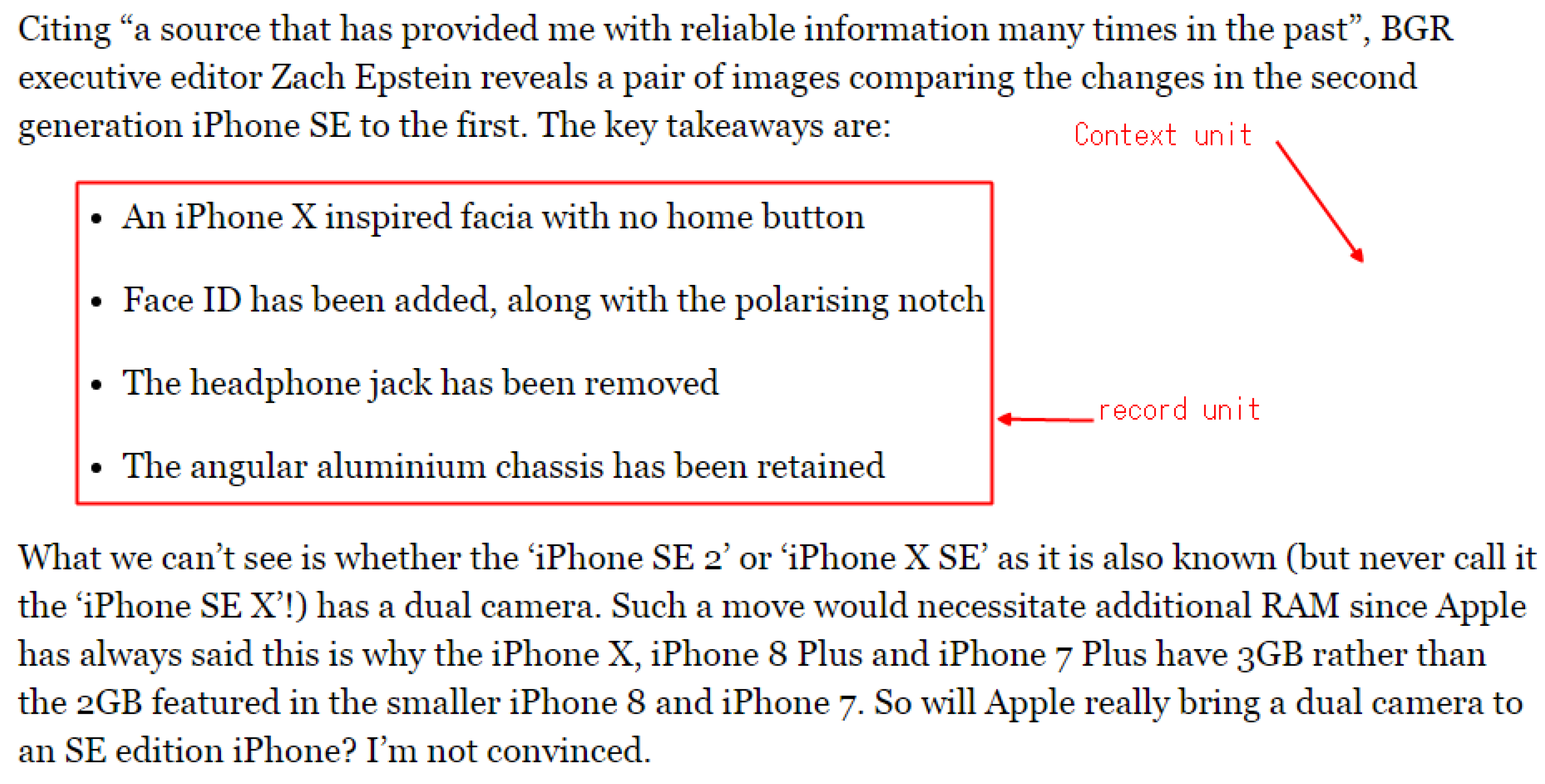
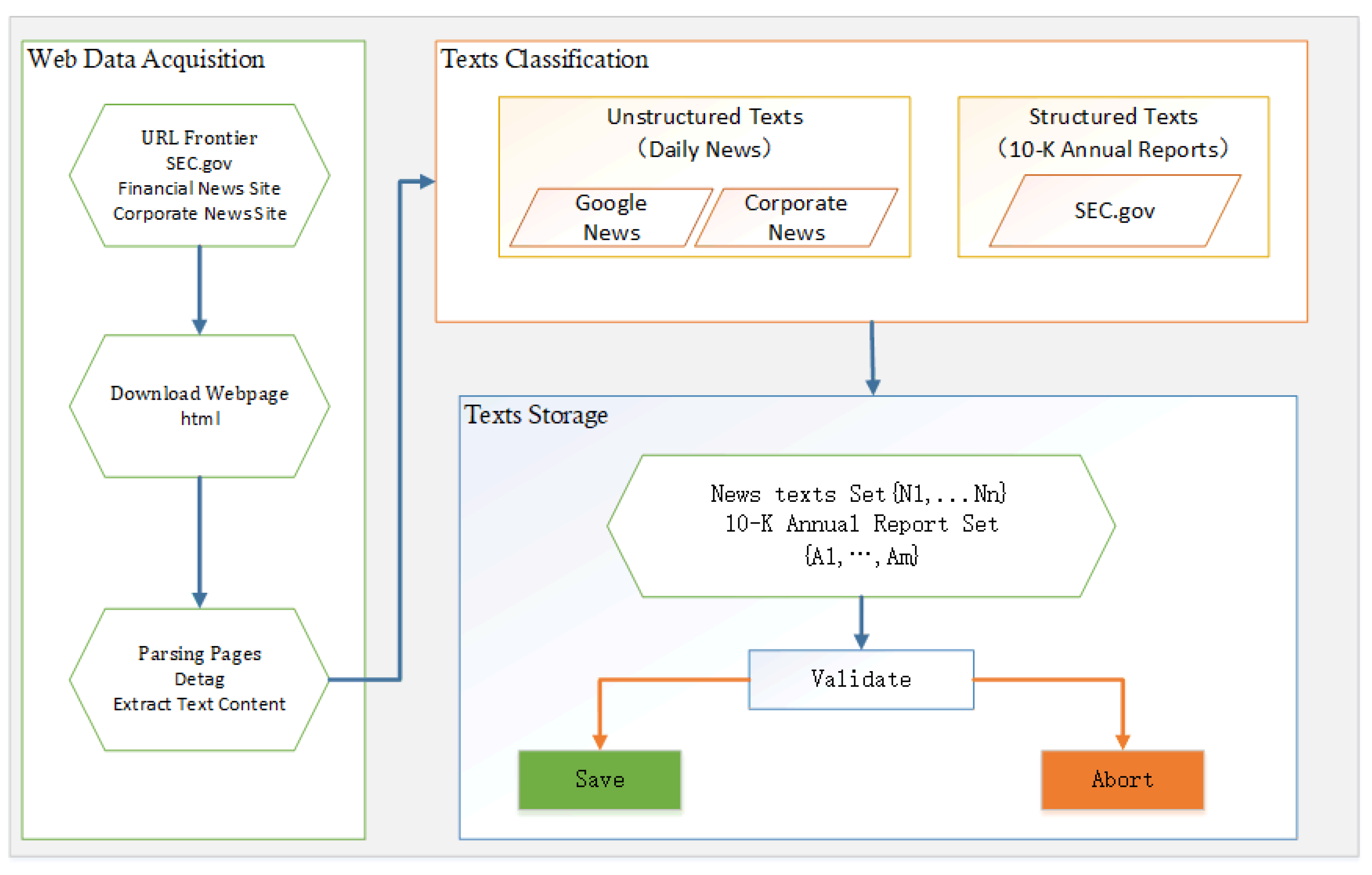
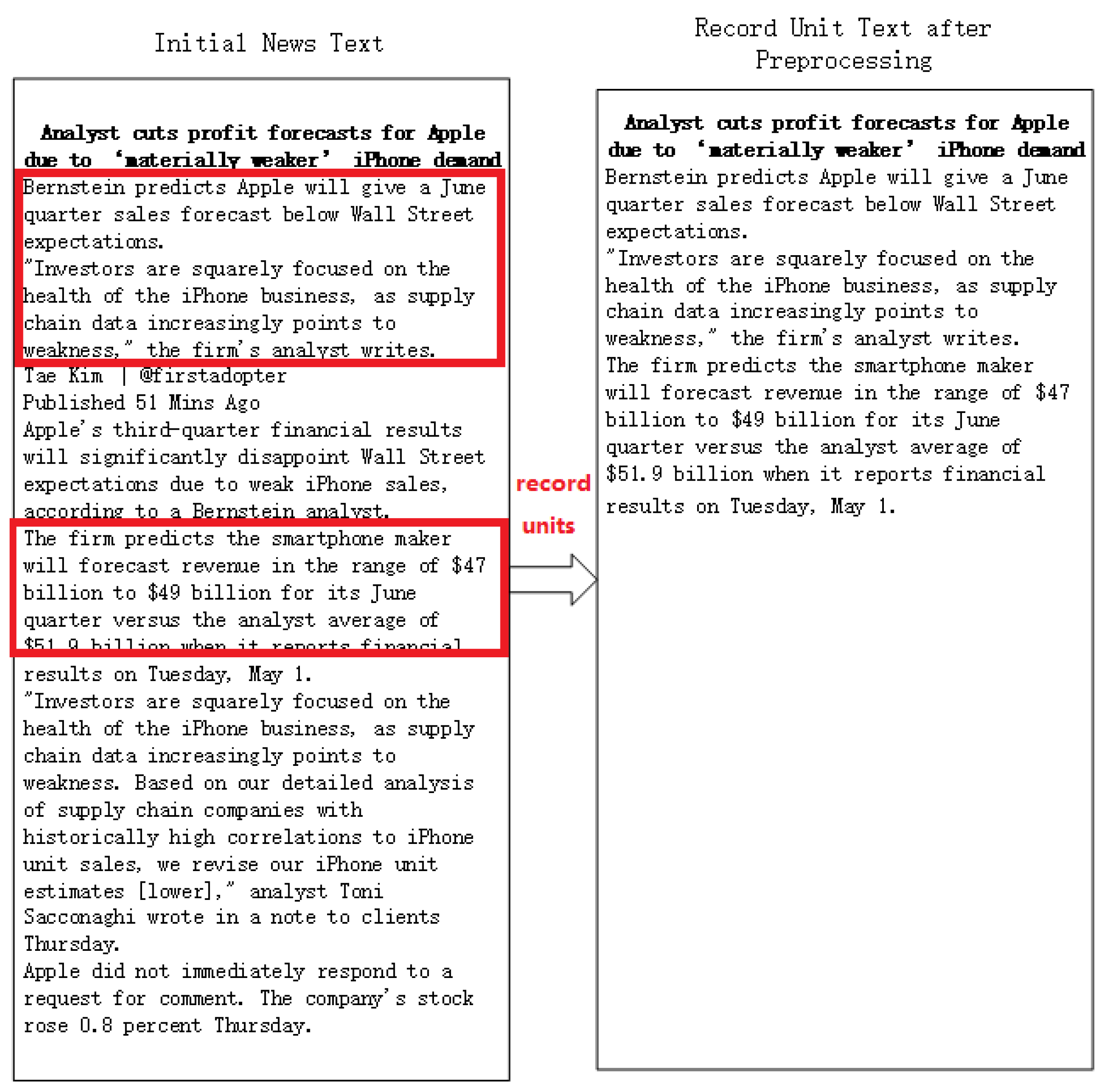
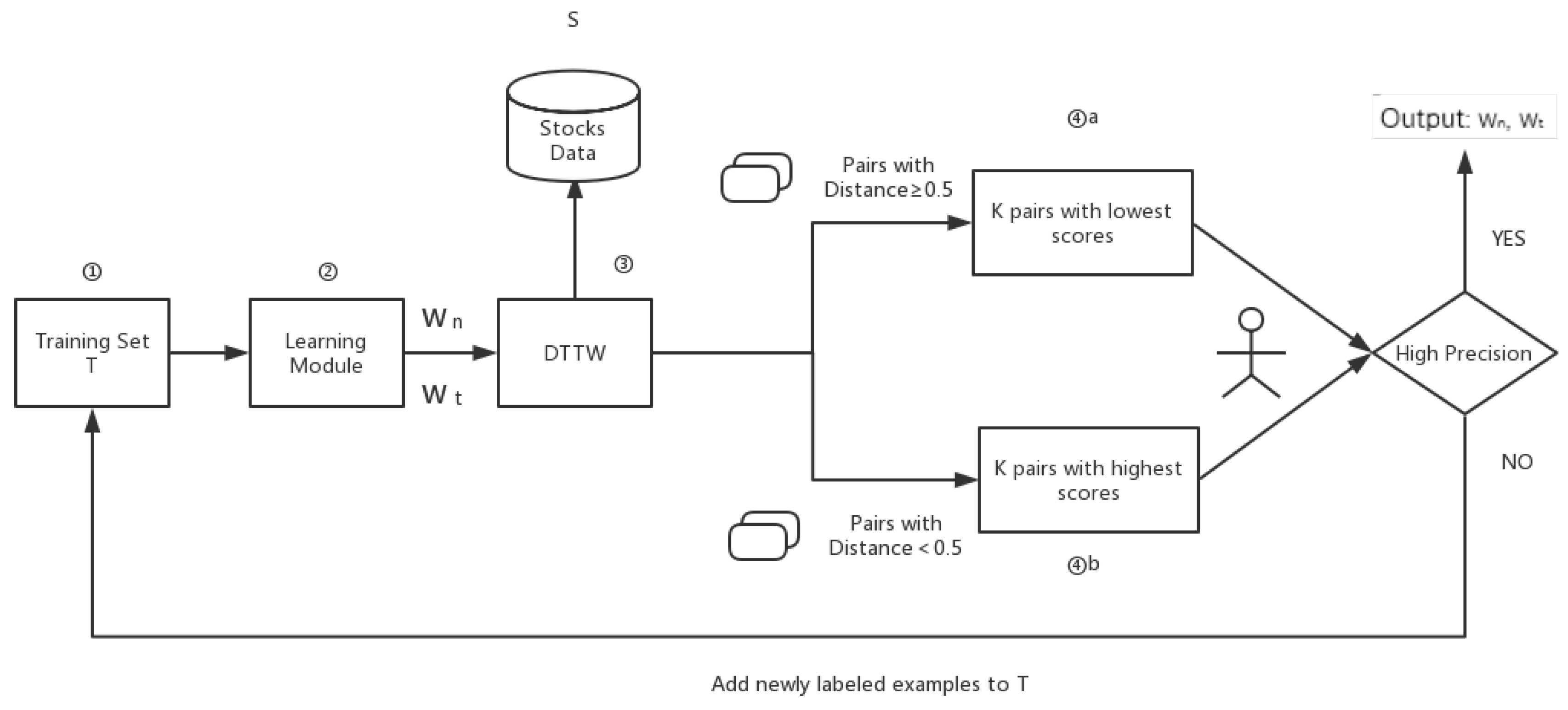
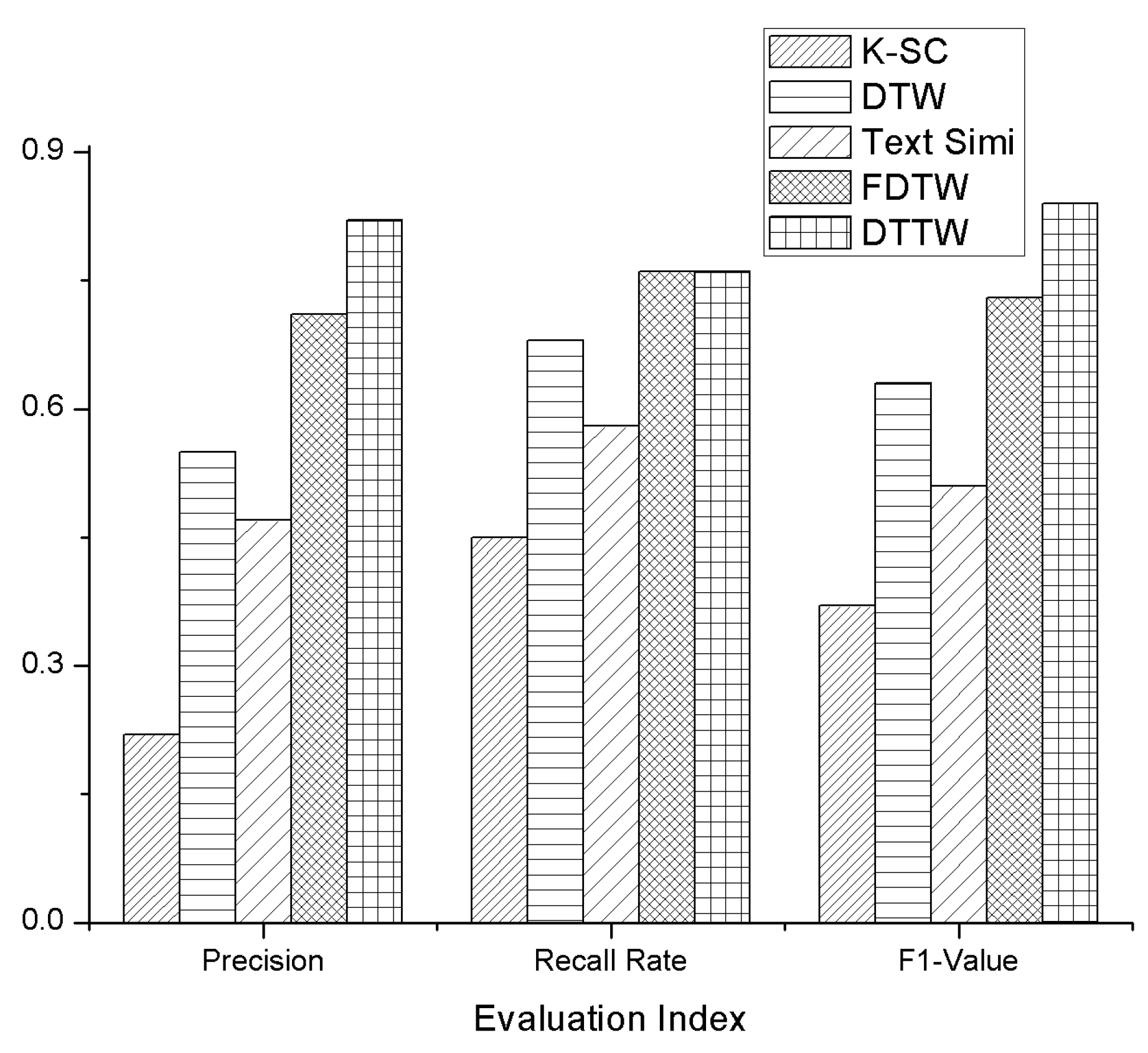
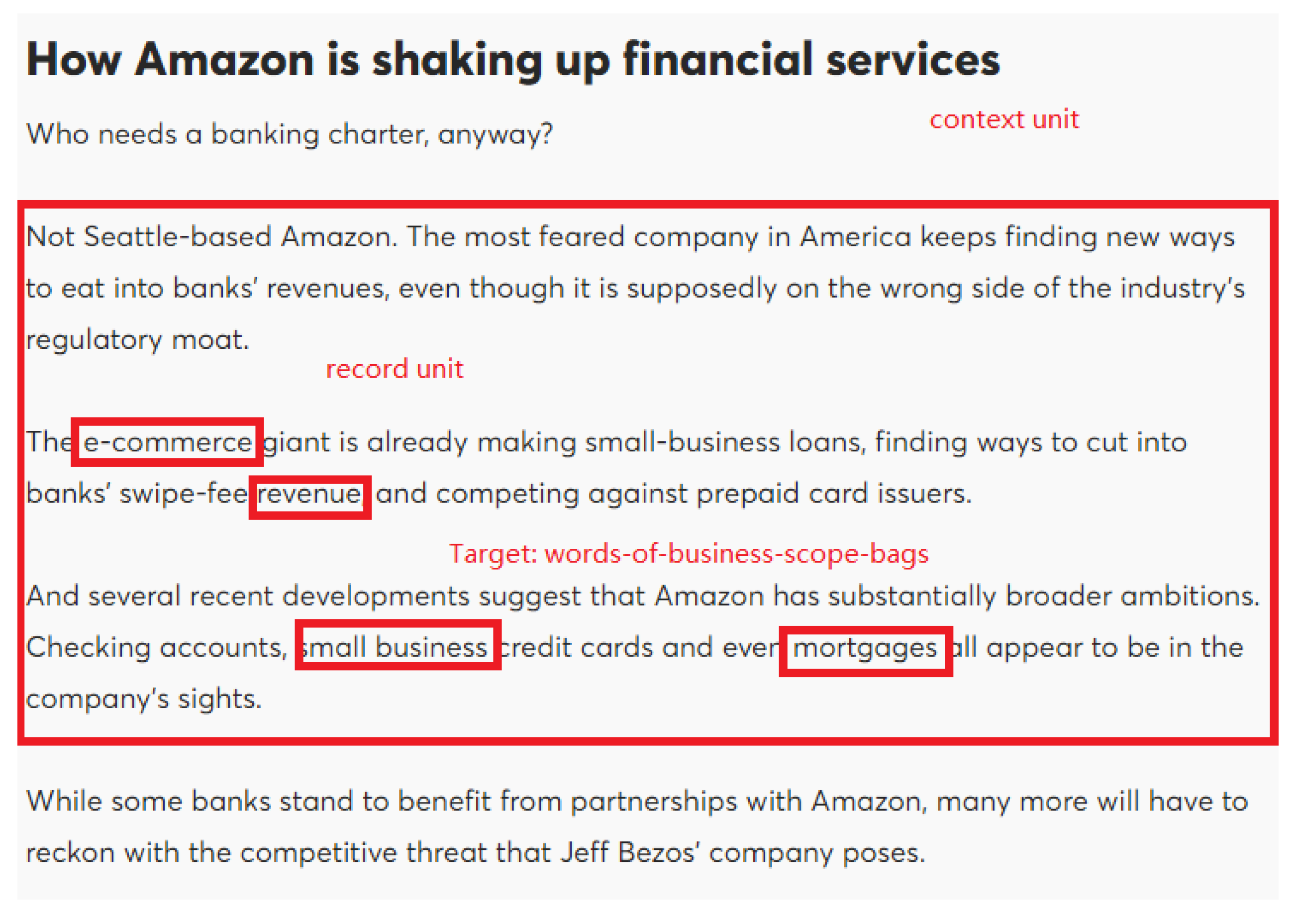
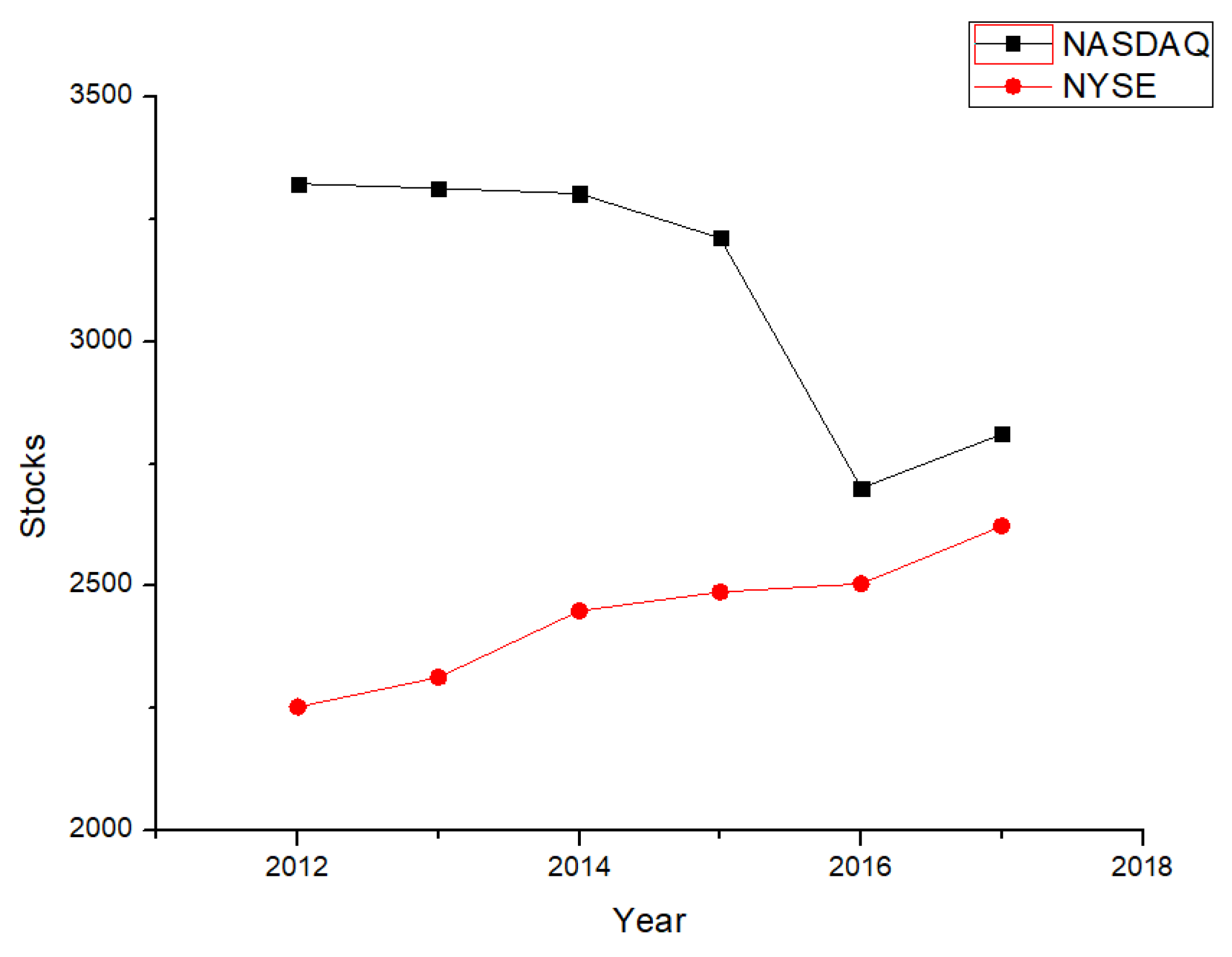
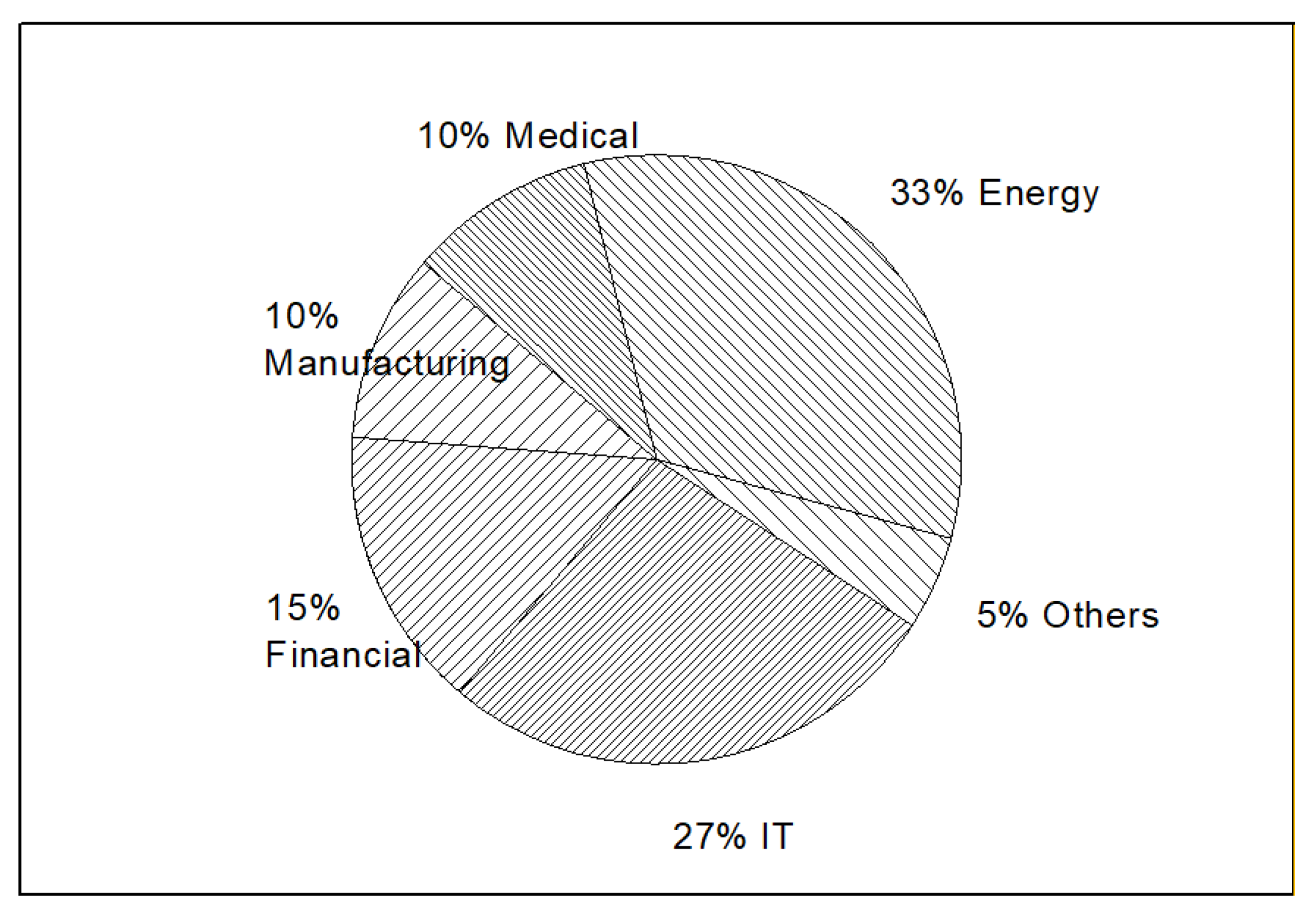


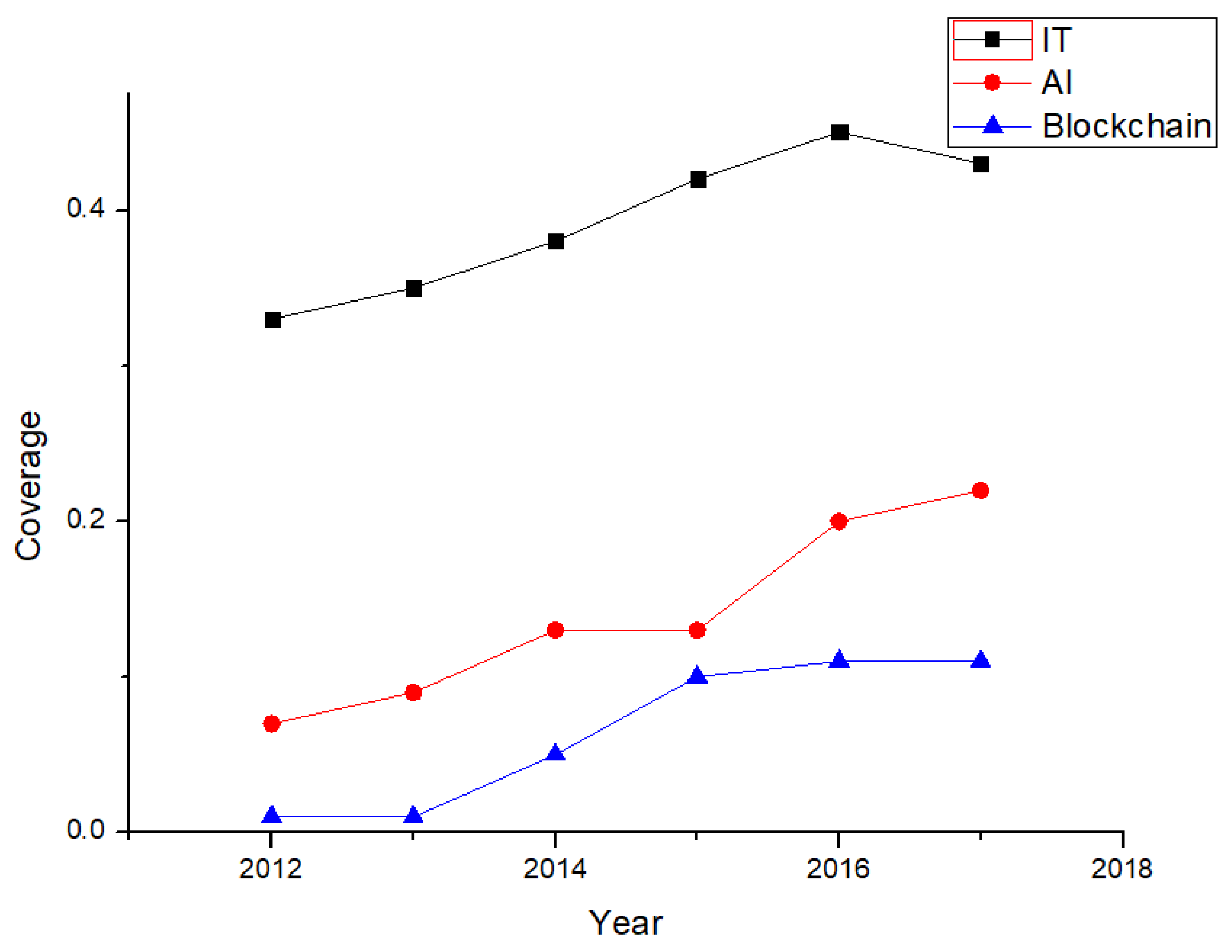
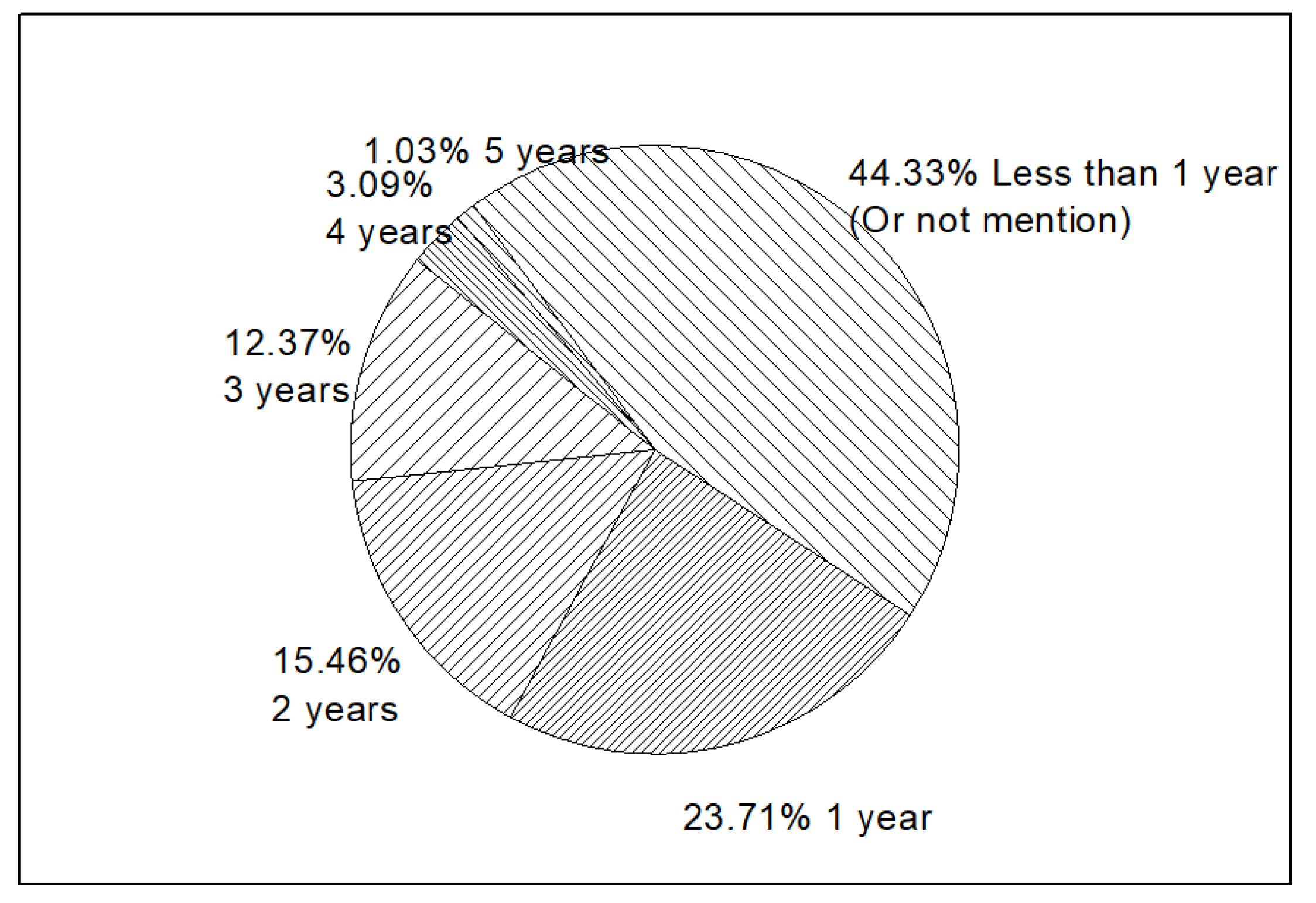
| - | K-SC | DTW | Text Simi | FDTW | DTTW |
|---|---|---|---|---|---|
| Time Complexity |
| ISIC Classification | Main Business Scope | Feature Words |
|---|---|---|
| Agriculture, Forestry and Hunting | Agriculture | fishing, farming |
| Fishing | Agriculture | (same as above) |
| Mining and Quarrying | Energy | petroleum-, gas, coal |
| Manufacturing | Manufacturing | motor-, car- |
| Construction | Real Estate | house-, building, apartment |
| Real Estate | Real Estate | (same as above) |
| Wholesale and Retail | Retail | retail-, WalMart |
| Restaurants and Motels | - | - |
| Transportation and Communication | Transportation | transport-, express, airlines |
| Finance | Finance | bank, accounting, stock exchange, fund |
| Government | - | - |
| Education | - | - |
| Medical | Biology and Medical | medical care, health care |
| + | Biology and Medical | (Same as above) |
| + | Information Technology | Internet, computer science, web |
| Business Scope | Percentage |
|---|---|
| Energy | 33.14% |
| Information Technology | 25.00% |
| Finance | 10.98% |
| Biology and Medical | 4.65% |
| Others | 2.98% |
| Specific Business Scope | Frequency | Percentage |
|---|---|---|
| Online Service | 5305 | 9.91% |
| E-commence | 2310 | 4.32% |
| Big Data | 2161 | 4.04% |
| Artificial Intelligence | 1721 | 3.23% |
| Business Intelligence | 1411 | 2.64% |
| Bitcoin | 1342 | 2.51% |
| Machine Learning | 1323 | 2.47% |
| Cloud Service | 1105 | 2.06% |
| Blockchain | 1037 | 1.94% |
| Virtual Reality | 585 | 1.09% |
| New Energy Car | 491 | 0.92% |
| Cloud Computing | 433 | 0.81% |
| Data Security | 375 | 0.70% |
| New Energy Exploit | 335 | 0.63% |
| Social Data | 277 | 0.52% |
| Healthcare Reform | 172 | 0.32% |
| Intelligence Treatment | 111 | 0.21% |
| Total | 20,119 | 37.59% |
© 2018 by the authors. Licensee MDPI, Basel, Switzerland. This article is an open access article distributed under the terms and conditions of the Creative Commons Attribution (CC BY) license (http://creativecommons.org/licenses/by/4.0/).
Share and Cite
Du, X.; Deng, L.; Qian, K. Current Market Top Business Scopes Trend—A Concurrent Text and Time Series Active Learning Study of NASDAQ and NYSE Stocks from 2012 to 2017. Appl. Sci. 2018, 8, 751. https://doi.org/10.3390/app8050751
Du X, Deng L, Qian K. Current Market Top Business Scopes Trend—A Concurrent Text and Time Series Active Learning Study of NASDAQ and NYSE Stocks from 2012 to 2017. Applied Sciences. 2018; 8(5):751. https://doi.org/10.3390/app8050751
Chicago/Turabian StyleDu, Xiaoping, Lelai Deng, and Kun Qian. 2018. "Current Market Top Business Scopes Trend—A Concurrent Text and Time Series Active Learning Study of NASDAQ and NYSE Stocks from 2012 to 2017" Applied Sciences 8, no. 5: 751. https://doi.org/10.3390/app8050751
APA StyleDu, X., Deng, L., & Qian, K. (2018). Current Market Top Business Scopes Trend—A Concurrent Text and Time Series Active Learning Study of NASDAQ and NYSE Stocks from 2012 to 2017. Applied Sciences, 8(5), 751. https://doi.org/10.3390/app8050751





